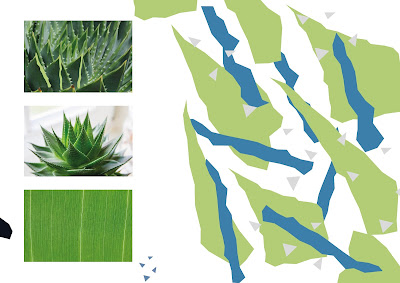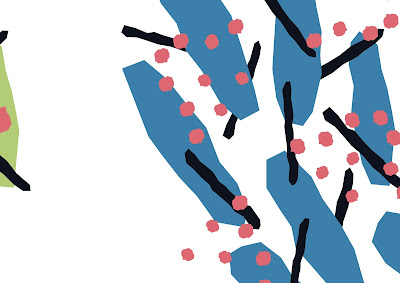To decide a name for my gender neutral brand I firstly decided to investigate into what it means to be gender fluid. Non-binary, gender expansive and agender all represent a person who does not identify as male or female, this is an interesting way to communicate my brand however I feel as though using those words would put too much of a label on gender fluidity and address the audience with something they may already have pre conceptions about.
I found that in some cultures such as the Native Americans, have accepted four genders and describe it as 'two spirit'. The four genders are feminine man masculine man, feminine female and masculine female, this would be a useful name to refer to for the brand name however, again its creating more constructs for people to identify with therefore loosing the purpose of the brand; creating something for both males, females and people who don't identify as those genders.
After deciding on the name Hen for my brand I took to my notepad and experimented with different visuals. I wanted to keep the type neutral but strong enough to stand out from the shelf. It could not contain brackets from a serif font as this would signify a feminine aspect, the same would apply to a bold san serif type that would communicate a more masculine element. I tried experimenting with the different letters themselves to reflect the breaking down of the constructs and creating something fresh and new.
The name I decided on is 'Hen'
Hen
Ideas:
The first idea I have is to create a brand that uses organic ingredients that are non harmful to the skin. From research gathered it was clear that there is a wide selection of plants that can benefit the skin and hair in some form, almost like its the earth's own pharmacy. This initiated the idea to communicate that gender is another form of earth's nature and that we should accept what is offered to us and work together to create something better.
The second idea I have is to create something more contemporary and clean to communicate from a neutral platform. Different colours would be used to communicate gender fluidity and how the product is available for everyone. The colours will be excitable enough without fading into a shop shelf yet hold a sense of quality and trust within the brand.
The third idea I have is something that requires a lot more time however, I would like to create called 'me' and use that initiative to build a brand that could satisfy any audience no matter what hair or skin type. It would be organic and non harmful to animals and address the audience on a more personal level.
Picking the first idea I began by deciding the packaging, I wanted rectangle boxes that would fit the different products inside, this was keep a consistent theme throughout and be none suggestive to a particular gender. It would also take up less storage if the boxes were more rectangular and straight. It was at this point that I started to sketch different layouts for the front of the packaging to see what would work and what wouldn't.
Dimensions for boxes
Shower gel - 18 x 7 x 7 cm
Shampoo - 15 x 6 x 6 cm
Conditioner - 15 x 6 x 6 cm
Moisturiser - 10 x 4 x 4 cm
Ordering some empty containers off amazon will also help bring the brand to life as it will show the audience how the products look themselves and not just the boxes.
After deciding on the size of the boxes I continued experimenting with different labels to see what would be best at communicating my idea. It consists of three different labels that could be used, firstly it could be a standard stick on label that covers a small part of the front (see red rectangle), another idea was to use a thicker wrap around label that would be pull off to open the product (see green rectangle) this would be useful however for the audience it could be unnecessary and none beneficial to them. Finally the third layout I sketched was to let the background dominate most of the front cover with the logo and information situated at the bottom of the packaging, this is to let the product represent itself without the logo being the first thing the audience sees.


Experimenting with type helped develop a logo which I felt covered a more neutral ground and did not signify masculine or feminine connotations. I tried two fonts, the first being Swedish Sans and the second is Sophia Pro. Both san serif fonts communicate a more neutral level and are none suggestive towards a particular gender. After much experimentation and development I found that keeping the font with a horizontal baseline and spaced kerning held the purpose of the brand without being too overdone and loosing its legibility.
From research, I've taken swatches from each picture to formulate a palette that communicates a more neutral element without being suggestive towards a particular gender.
Once the swatches were selected I then separated the colours into two categories, masculine and feminine. As my research informed me the colours associated with feminine were mostly soft pastels and bright colours, whereas the colours associated with masculinity were harsher darker colours.
As in my previous project I had struggle to choose a colour theme for my packaging and ended up deciding on colours that did not communicate gender fluidity or worked as a theme. This time I have came to the solution to combine both sets of colours that are most associated with femininity and masculinity. This will create a new theme of colours which will take away those pre conceptions of colours that are associated with gender.
I decided that I wanted to use a type of pattern on the packaging that communicated the ingredients in a new way. As I am creating something that does not conform to the gender constructs the pattern can be scattered and abstract but keeping elements from the ingredients themselves as not to look like random shapes.
Finding images on the internet of the ingredients helped get and idea of the different shapes involved in the pattern.
Roughly tracing around the ingredients helped create different shapes that alone would not communicate anything but together as a theme help the audience understand what it is. The colours chosen were a mixture of masculine darks and feminine brights, this was to create a contrasting theme that at first may not look appealing but to go as a theme works well. I applied this same technique to the experiments below until I was happy with the outcome.
Keeping the theme consistent was a challenge with these patterns. As each plant and ingredient was so different from one and another it was hard to keep the legibility of the illustration to stop it looking like a random shape. The colours selected I used the Scandinavian inspired palette which helped bring a more neutral platform to the designs without being suggestive towards a particular gender. Adding the shapes to different layers also brought depth and detail to the patterns and make them appear less flat.
Once complete I added the patterns to the packaging nets to see if they would work as a theme and did not look too overcrowded. After much trial and error it was beneficial to let the patterns have more space to breath and make them look less cluttered. Although, when the packaging would be made it would reduce the business as the pattern would be working across multiple sides.
Referring to my previous sketches I mocked up the labels on the front of the packaging to bring the idea to life and see if it worked. Trying multiple layouts helped get an idea of what worked and what didn't, I found that the fourth layout on each set was inconsistent and the weakest out of the attempts, it appears to have too much white space and does not make the product stand out. The other attempts on the layout were much more successful and I felt helped communicate the product in an understandable yet engaging way.
The next step is to print out some mock ups and see if the packaging and front labels work.
Printing out mock ups of the front label helped get a better understanding of what was the strongest and weakest layout. The first three proved the strongest as the fourth layout looked squashed and illegible for the audience. The print out also showed the colours that were used in the designs which I am pleased with, they are bright but not overpowering and worked well as a theme throughout the different products.
I decided that the two strongest layouts were the wrap around label and the other standard front stick on label. After printing the mock up nets out I could then build the packaging to see if it worked and decide which label was the strongest. After much debate and feedback it was decided that the wrap around label was the strongest as it separated the busy background from the information presented on the front. It also left enough room for the information to be clear and legible as not to confuse the audience on what the products are offering.
With previous development it was then decided to print the packaging digitally. The stock chosen for the nets was a 120 gsm matte paper which I felt would enhance the colours of the pattern design without being too distracting. A glossy or satin finish would make the packaging look cheap and reflect too much light for the design.
For the labels I went with a thinner 90 gsm stock to give the labels flexibility when wrapped around the packaging and also make it easier for the audience to remove if they choose so. Again this was printed on matte stock which helped bring the packaging together as it did not distract the eye from the designed background either.
After making up the packaging I then wanted to professionally photoshoot the products to make them look more real and as if they were available to the public. This proved a success as the design worked as a theme but also separately if needed, I also tried the labels onto bottles to bring the designs to life and give the audience more of an idea of what the product looks like. The main issue I had was making the packaging, as I was short on time some mistakes were made when building the packaging which is shown in some images. However, these are not the final images as they will need to be developed further in Photoshop therefore I can fix some mistakes.




















































































